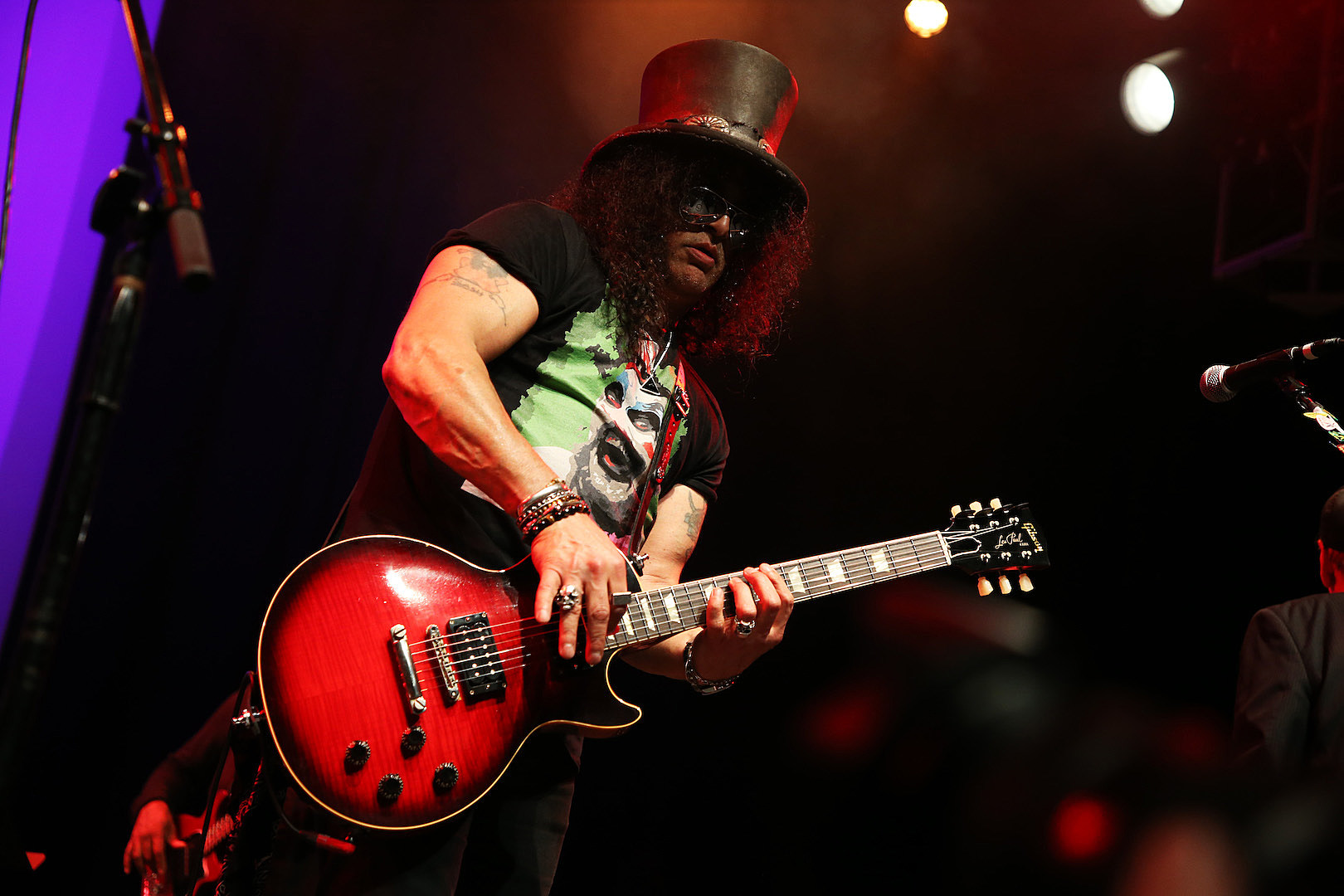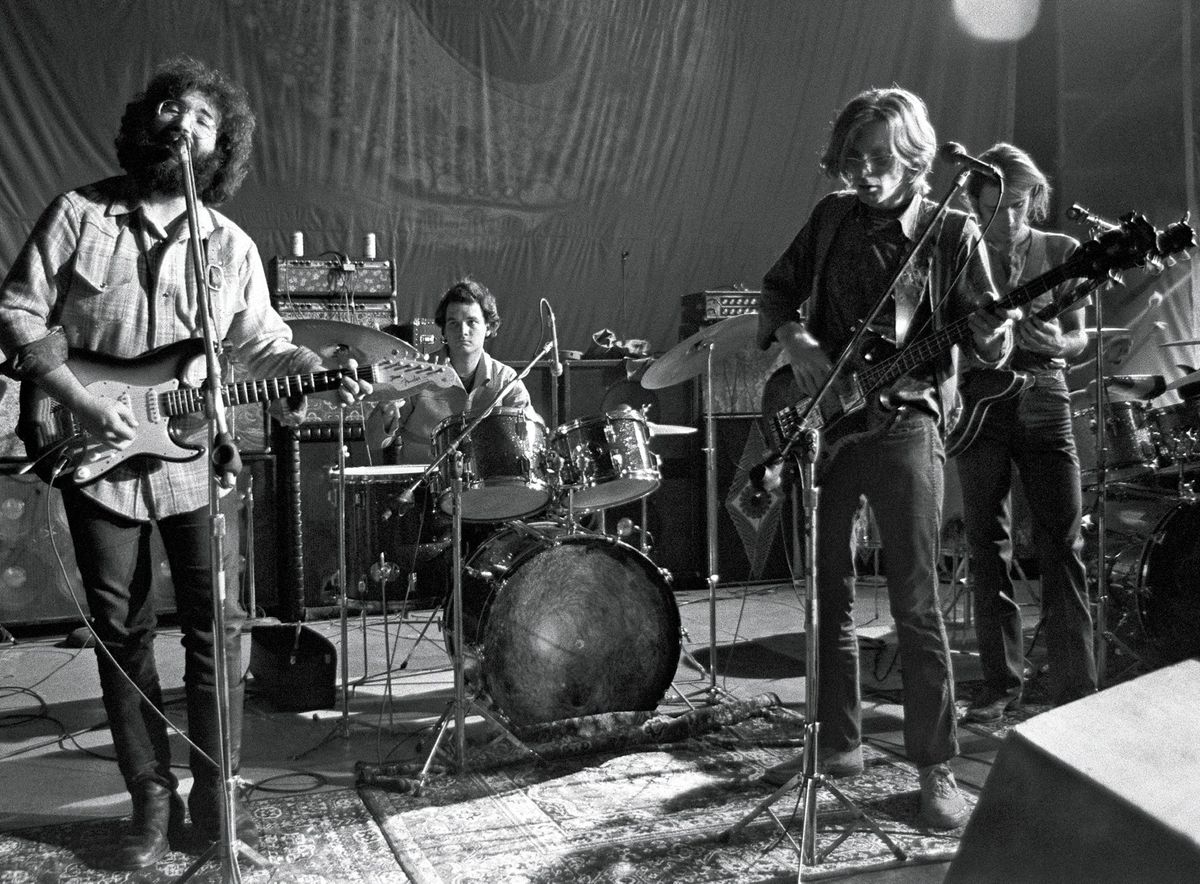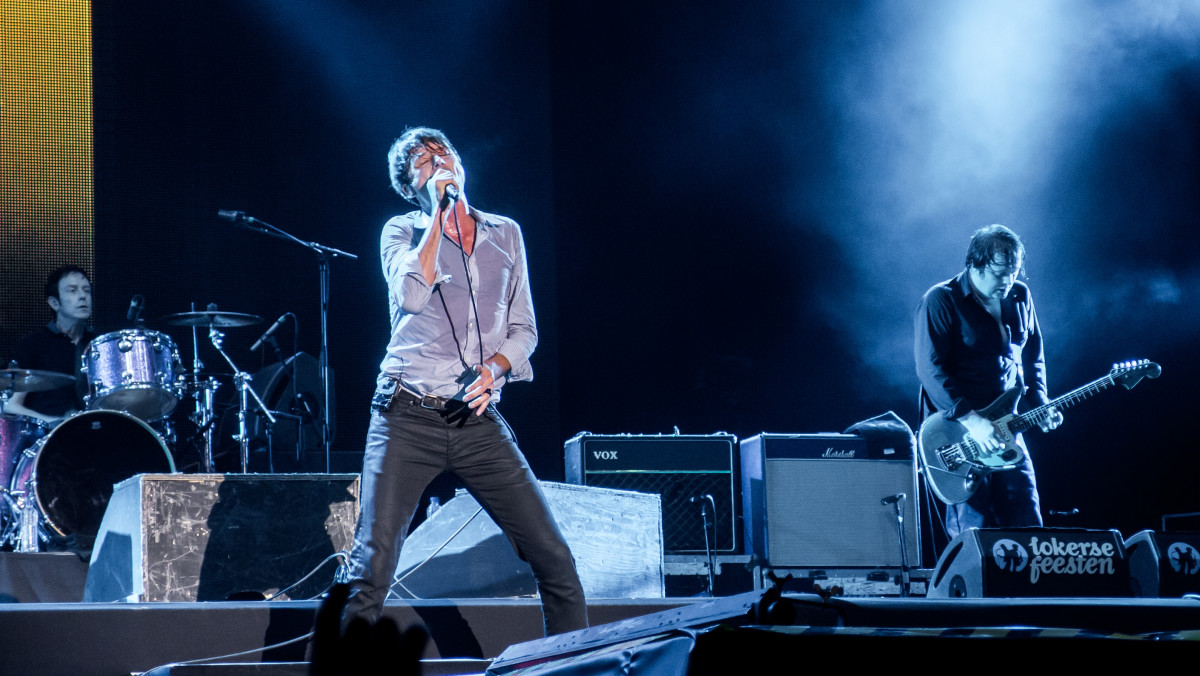Home>Genres>Rock>What Kind Of Music Is Soft Rock Music Genre


Rock
What Kind Of Music Is Soft Rock Music Genre
Published: November 5, 2023
Discover the soothing melodies and gentle rhythms of soft rock music, a genre that blends the energy of rock with a softer, more melodic sound. Immerse yourself in the harmonious world of rock and experience the perfect balance of power and tranquility.
(Many of the links in this article redirect to a specific reviewed product. Your purchase of these products through affiliate links helps to generate commission for AudioLover.com, at no extra cost. Learn more)
Table of Contents
Introduction
Soft Rock, also known as mellow rock or light rock, is a music genre that emerged in the late 1960s and gained popularity in the 1970s and 1980s. It is characterized by its gentle melodies, soothing vocals, and sentimental lyrics. Soft Rock music offers a harmonious blend of rock and pop elements, delivering a smooth and easy listening experience.
This genre was a response to the louder and more aggressive sound of traditional rock music at the time. Soft Rock aimed to provide a more accessible and radio-friendly alternative, catering to a wide audience with its melodic hooks and relatable themes. Soft Rock songs often evoke emotions of love, heartache, introspection, and nostalgia.
The origins of Soft Rock can be traced back to the folk rock movement of the 1960s, which blended acoustic guitar-driven melodies with introspective lyrics. Influenced by artists like The Beatles, Simon & Garfunkel, and The Byrds, Soft Rock began to take shape as a distinct genre.
In this article, we will explore the defining characteristics of Soft Rock music, its influences, notable bands and artists, its evolution over the years, and its enduring popularity. We will also discuss its impact on the music industry and its relevance in contemporary music.
Definition of Soft Rock
Soft Rock is a music genre characterized by its mellow and soothing sound, often combining elements of rock and pop. It is known for its gentle melodies, sentimental lyrics, and smooth vocal harmonies. Soft Rock emerged as a response to the louder and more aggressive sound of traditional rock music, aiming to provide a more accessible and commercially appealing alternative.
Soft Rock songs typically feature a blend of acoustic and electric instrumentation, including gentle guitar riffs, melodic piano lines, and soft percussion. The tempo is usually slower and more relaxed compared to other rock genres, allowing the melodies to flow gracefully.
Lyrically, Soft Rock music often explores themes of love, relationships, and personal introspection. The lyrics are introspective and emotional, resonating with listeners on a deep and personal level. The sentimental nature of Soft Rock songs appeals to a wide range of listeners, making it a popular choice for radio play and mainstream success.
Soft Rock is renowned for its emphasis on strong vocal performances. The singers in this genre often possess smooth and melodic voices, which perfectly complement the gentleness of the music. Harmonies are also a prominent feature, adding depth and richness to the overall sound.
Overall, Soft Rock can be defined as a genre that combines the melodic and accessible qualities of pop music with the emotional depth and simplicity of rock, creating a mellower and more introspective sound.
Origins of Soft Rock
The origins of Soft Rock can be traced back to the late 1960s, during a period where traditional rock music was becoming increasingly louder and more aggressive. The emergence of Soft Rock was a response to this trend, as musicians sought to create a more mellow and melodic sound.
One of the major influences on the development of Soft Rock was the folk rock movement of the 1960s. Artists like Bob Dylan, Simon & Garfunkel, and The Byrds introduced a softer and more introspective approach to rock music, combining acoustic guitar-driven melodies with thoughtful and poetic lyrics.
The Beatles also played a significant role in the emergence of Soft Rock. Their later albums, starting with “Rubber Soul” and continuing through “The White Album,” showcased a more relaxed and melodic sound, paving the way for the softer side of rock music.
In addition to these influences, the singer-songwriter movement of the 1970s played a crucial role in shaping Soft Rock. Artists like James Taylor, Carole King, and Cat Stevens gained popularity for their introspective and heartfelt compositions, which often featured delicate arrangements and soulful vocals.
Another key influence on the development of Soft Rock was the rise of the West Coast sound. Bands like The Eagles, Fleetwood Mac, and America incorporated elements of folk, pop, and rock, creating a distinctive sound that epitomized the mellow and laid-back vibe of the 1970s.
Overall, the origins of Soft Rock can be attributed to a combination of folk, rock, and pop influences, as well as a desire to create a more accessible and mellow alternative to the loud and aggressive rock music of the time.
Characteristics of Soft Rock Music
Soft Rock music is characterized by several distinct features that set it apart from other genres. These characteristics contribute to the genre’s soothing and mellow sound, making it a popular choice for easy listening and radio play.
One of the key characteristics of Soft Rock is its emphasis on melodic hooks and catchy choruses. Soft Rock songs often feature memorable and sing-along-worthy melodies that stay with listeners long after the song has ended. These melodies are typically accompanied by gentle guitar riffs, melodic piano lines, and soft percussion.
The tempo of Soft Rock songs is generally slower and more relaxed compared to other rock genres. This slower pace allows the melodies to flow gracefully and gives the music a calming and easygoing feel. It also provides space for the emotional depth of the lyrics to shine through.
Lyrically, Soft Rock songs often explore themes of love, heartache, personal introspection, and nostalgia. The lyrics are heartfelt and sincere, resonating with listeners on an emotional level. Soft Rock artists excel at capturing the complexities of human emotions and experiences, creating an intimate connection with their audience.
Another defining characteristic of Soft Rock is its emphasis on strong vocal performances. Soft Rock artists often possess smooth and melodic voices, which perfectly complement the gentle nature of the music. The vocals are often accompanied by rich harmonies, adding depth and texture to the overall sound.
While Soft Rock is generally known for its mellow sound, it can also incorporate elements of rock and pop. Some Soft Rock songs may feature electric guitar solos or incorporate elements of pop production, adding a touch of energy and catchiness to the music.
In summary, the characteristics of Soft Rock include melodic hooks, catchy choruses, a relaxed tempo, heartfelt lyrics, strong vocal performances, and the occasional incorporation of rock and pop elements. Together, these features contribute to the genre’s distinctive sound and enduring popularity.
Influences on Soft Rock Music
Soft Rock music has been influenced by various genres and musical movements throughout its development. These influences have shaped the sound and style of Soft Rock, contributing to its distinctive characteristics and popularity.
One of the primary influences on Soft Rock is the folk music movement of the 1960s. Artists like Bob Dylan, Joni Mitchell, and Simon & Garfunkel infused their music with introspective lyrics and acoustic instrumentation, which laid the groundwork for the mellow and melodic sound of Soft Rock.
The Beatles also had a significant influence on Soft Rock. Their exploration of diverse styles and experimentation with melodies and arrangements inspired many Soft Rock artists. The Beatles’ softer and more melodic songs, such as “Yesterday” and “Let It Be,” played a crucial role in shaping the gentle and accessible sound of the genre.
The singer-songwriter movement of the 1970s also left a lasting impact on Soft Rock. Artists like James Taylor, Carole King, and Cat Stevens brought heartfelt and introspective songwriting to the forefront, with their sensitive lyrics and delicate melodies. These singer-songwriters played a significant role in popularizing Soft Rock and establishing its emotional and personal connection with listeners.
The West Coast sound, associated with bands like The Eagles, Fleetwood Mac, and America, was another influential factor in the development of Soft Rock. These bands blended elements of folk, rock, and pop, creating a unique sound that captured the laid-back and harmonious vibes of the 1970s. Their use of intricate vocal harmonies, smooth melodies, and catchy hooks became a signature feature of Soft Rock.
Furthermore, the emergence of easy listening and adult contemporary radio formats played a crucial role in shaping Soft Rock. These radio formats focused on broadcasting music that was soothing, melodic, and accessible to a wide audience. Soft Rock became a staple of these formats, further fueling its popularity and reach.
Overall, the influences on Soft Rock music are diverse and span across genres such as folk, pop, rock, and singer-songwriter movements. These influences have collectively contributed to the distinct sound and characteristics of Soft Rock, making it a beloved genre that continues to resonate with fans around the world.
Prominent Soft Rock Bands and Artists
Soft Rock has produced a wide array of talented bands and artists over the years. These influential figures have contributed to the genre’s growth and popularity, leaving a lasting impact on the music industry. Here are some of the most prominent Soft Rock bands and artists:
1. The Eagles: Known for their harmonious sound and timeless hits such as “Hotel California” and “Take It Easy,” The Eagles are considered one of the definitive Soft Rock bands. Their exceptional vocal harmonies and melodic guitar work set the standard for the genre.
2. Fleetwood Mac: With their iconic lineup featuring Stevie Nicks and Lindsey Buckingham, Fleetwood Mac created a fusion of Soft Rock, pop, and folk influences. Their album “Rumours” remains one of the best-selling records of all time, featuring hits like “Go Your Own Way” and “Dreams.”
3. Elton John: A legendary singer-songwriter, Elton John is known for his powerful and emotive ballads. Songs like “Your Song” and “Rocket Man” showcase his distinctive voice and piano-driven melodies, earning him a well-deserved place in the Soft Rock pantheon.
4. James Taylor: Recognized for his soothing vocals and introspective songwriting, James Taylor has become one of the most beloved Soft Rock artists. Hits like “Fire and Rain” and “You’ve Got a Friend” exhibit his signature blend of heartfelt lyrics and gentle melodies.
5. Carole King: With her album “Tapestry,” Carole King became a defining figure in Soft Rock. Her soulful voice and heartfelt compositions, including songs like “You’ve Got a Friend” and “It’s Too Late,” solidified her status as an influential Soft Rock artist.
6. Simon & Garfunkel: Known for their close harmonies and introspective lyrics, Simon & Garfunkel are pioneers of Soft Rock. Songs like “Bridge Over Troubled Water” and “The Sound of Silence” showcase their exceptional songwriting and musical chemistry.
7. Billy Joel: Although known for his versatility, Billy Joel has crafted numerous Soft Rock classics. Tracks like “Piano Man” and “Just the Way You Are” highlight his skill at blending pop sensibilities with heartfelt balladry.
These are just a few of the many talented artists who have contributed to the Soft Rock genre. Their music continues to captivate audiences and serve as a testament to the enduring popularity and influence of Soft Rock.
Evolution of Soft Rock Music
Soft Rock music has evolved and transformed over the years, adapting to changing musical trends while still maintaining its core characteristics. The genre has seen various shifts in sound, production techniques, and lyrical themes, reflecting the ever-changing tastes of listeners.
In its early stages, Soft Rock drew heavily from the folk rock movement of the 1960s. Artists like James Taylor, Carole King, and Cat Stevens utilized acoustic instrumentation and heartfelt lyrics, creating a mellow and introspective sound that resonated with audiences.
In the 1970s, Soft Rock experienced a significant expansion and diversification. The emergence of the West Coast sound, characterized by bands like The Eagles and Fleetwood Mac, brought a more polished and radio-friendly edge to the genre. These bands incorporated elements of pop and rock, blending them with the mellow vibes of Soft Rock to create a catchy and accessible sound.
During the 1980s, Soft Rock began to incorporate more electronic elements, influenced by the rise of synth-pop and new wave. Artists such as Phil Collins and Toto incorporated synthesized sounds and programmed drums into their music, while still maintaining the melodic and sentimental qualities that defined Soft Rock.
The 1990s saw a decline in the mainstream popularity of Soft Rock, as the rise of grunge and alternative rock took center stage. However, the genre continued to thrive in the adult contemporary market, with artists like Celine Dion and Richard Marx achieving success with their heartfelt ballads.
In recent years, Soft Rock has experienced a resurgence in popularity, often blending with elements of indie and folk music. Artists like John Mayer and Ed Sheeran have incorporated Soft Rock influences into their music, combining acoustic guitar-driven melodies with modern production techniques.
Overall, the evolution of Soft Rock has seen the genre adapt to the changing musical landscape while staying true to its core characteristics. From its folk-influenced origins to its incorporation of electronic elements, Soft Rock continues to captivate listeners with its melodic hooks, sentimental lyrics, and soothing sound.
Popularity of Soft Rock Music
Soft Rock music has enjoyed widespread popularity since its emergence in the late 1960s. Its accessibility, melodic hooks, and relatable themes have resonated with listeners of all ages and cultures, propelling it to the forefront of mainstream music.
During the 1970s, Soft Rock dominated the airwaves, with radio stations around the world embracing the genre. Its soothing and melodic sound made it a perfect fit for easy listening formats and adult contemporary radio stations. Soft Rock songs became chart-toppers, and albums from artists like The Eagles, Fleetwood Mac, and James Taylor achieved immense commercial success.
Soft Rock’s popularity continued into the 1980s, as the genre further evolved to include elements of pop and electronic music. Artists like Phil Collins, Foreigner, and Toto achieved worldwide fame with their Soft Rock-infused hits, blending catchy melodies with polished production.
One of the keys to the enduring popularity of Soft Rock is its universal appeal. The genre’s emotional themes of love, heartache, and introspection strike a chord with listeners of various backgrounds and ages. Soft Rock provides a comforting and familiar sound that resonates deeply with both longtime fans and new generations discovering the genre.
Moreover, Soft Rock has stood the test of time due to its melodic hooks and memorable choruses. Many Soft Rock songs have become timeless classics, with listeners still singing along to hits like “Hotel California,” “Dreams,” and “You’ve Got a Friend” decades after their release.
Soft Rock’s popularity has also been driven by its crossover success into other media. The genre has been prominently featured in television shows, films, and commercials, further exposing the music to wider audiences and contributing to its continued relevance.
In recent years, Soft Rock has experienced a resurgence in popularity, thanks to its influence on contemporary artists and the nostalgic appeal it holds for older audiences. Soft Rock-inspired songs and covers have topped the charts and garnered millions of streams, demonstrating a continued appreciation for the genre’s timeless sound.
Overall, the popularity of Soft Rock music can be attributed to its accessible and melodic nature, relatable themes, and its ability to evoke deep emotions in listeners. It has stood the test of time and continues to be cherished by fans all over the world.
Impact of Soft Rock Music
Soft Rock music has had a significant impact on the music industry, shaping the sound of popular music and leaving a lasting influence on subsequent genres and generations of musicians. Here are some of the key impacts of Soft Rock:
1. Broadening the Definition of Rock: Soft Rock expanded the definition of rock music by introducing a softer and more melodic sound. It showcased that rock music could be gentle, introspective, and emotionally-driven, challenging the perception that rock had to be loud and rebellious.
2. Radio and Commercial Success: Soft Rock became a staple on radio stations around the world, dominating easy listening and adult contemporary formats. Its melodic hooks, relatable themes, and soothing sound were perfectly suited for mainstream success, earning Soft Rock artists a wide fanbase and commercial recognition.
3. Merging Genres: Soft Rock blended elements of rock, pop, folk, and even elements of electronic music throughout its evolution. This cross-genre approach laid the groundwork for future genres and artists to adopt a more flexible and diverse sound, blurring the boundaries between musical styles.
4. Songwriting and Lyrical Depth: Soft Rock placed a significant emphasis on songwriting, with heartfelt and introspective lyrics. Artists like James Taylor, Carole King, and Billy Joel showcased the power of thought-provoking lyrics, setting a standard for heartfelt songcraft that influenced generations of songwriters.
5. Vocal Harmonies: Soft Rock was known for its rich vocal harmonies, demonstrated by bands like The Eagles and Fleetwood Mac. Their intricate and seamless harmonies became a trademark of the genre and inspired many vocal-driven acts in the years to come.
6. Emotional Connection with Fans: Soft Rock’s sentimental and introspective nature connected deeply with listeners, touching their hearts and providing solace during difficult times. Soft Rock became a soundtrack for personal moments, creating a strong emotional bond between the artists and their fans.
7. Resurgence and Nostalgic Appeal: Soft Rock has had a resurgence in recent years, as new artists incorporate its sound into their music and older audiences revisit the genre’s classics. The nostalgic appeal of Soft Rock continues to attract fans of all ages, keeping the genre relevant and ensuring its impact stands the test of time.
In summary, Soft Rock music has made a lasting impact on the music industry, broadening the definition of rock, influencing subsequent genres, and creating an emotional connection with listeners. Its commercial success, intricate vocal harmonies, and heartfelt songwriting have left an indelible mark on popular music, shaping the sound and artistry of countless artists.
Contemporary Soft Rock Music
While Soft Rock first gained popularity in the 1970s and 1980s, the genre continues to thrive in contemporary music. Artists today draw inspiration from the classic sound of Soft Rock while infusing it with modern elements, creating a fresh and contemporary take on the genre.
One notable aspect of contemporary Soft Rock is the blending of traditional instrumentation with modern production techniques. Artists incorporate elements of electronic music, such as synthesizers and programmed beats, to give their songs a contemporary edge while still maintaining the melodic and introspective qualities of Soft Rock.
Many contemporary Soft Rock artists also experiment with genre fusion, incorporating elements from other genres to create a unique and refreshing sound. This fusion can be seen in artists like John Mayer, who infuses blues and pop influences into his Soft Rock sound, or HAIM, who blend Soft Rock with elements of indie pop and folk.
Lyrically, contemporary Soft Rock maintains a focus on emotions, introspection, and personal experiences. Artists often explore themes of love, relationships, self-discovery, and the ups and downs of life’s journey. The lyrics aim to connect with listeners on a deep and relatable level, much like their predecessors in the heyday of Soft Rock.
Contemporary Soft Rock artists also emphasize strong vocal performances, with many showcasing their vocal range and skill. From the smooth and soulful voices to the powerful and emotive singing styles, the vocals in contemporary Soft Rock add an extra layer of emotion and depth to the music.
Moreover, the rise of streaming platforms and online music sharing has provided opportunities for emerging Soft Rock artists to gain exposure and connect with a wider audience. This accessibility has allowed the genre to reach new listeners and has contributed to the continued growth and popularity of contemporary Soft Rock.
Some notable contemporary Soft Rock artists include Ed Sheeran, who blends pop sensibilities with Soft Rock influences in his acoustic-driven ballads, and Adele, known for her soulful voice and heartfelt balladry. Additionally, bands like Coldplay and OneRepublic incorporate Soft Rock elements into their anthemic and melodic sound.
In summary, contemporary Soft Rock music maintains the core characteristics of the genre while incorporating modern production techniques and genre fusion. With its emphasis on emotions, introspection, and strong vocal performances, contemporary Soft Rock continues to captivate audiences and solidify the genre’s place in the current music landscape.
Conclusion
Soft Rock music, with its gentle melodies, sentimental lyrics, and soothing sound, has made a significant impact on the music industry throughout its evolution. From its origins in the late 1960s to its contemporary resurgence, the genre continues to captivate listeners with its accessibility and emotional depth.
Soft Rock has broadened the definition of rock music, showcasing that it can be melodic, introspective, and emotionally-driven. The genre’s influence can be seen in the blending of genres, the emphasis on strong songwriting, and the use of intricate vocal harmonies.
Throughout its history, Soft Rock has produced legendary bands and artists who have left an indelible mark on the music landscape. The Eagles, Fleetwood Mac, Elton John, and James Taylor are just a few examples of artists who have achieved commercial success and garnered a dedicated fanbase.
Soft Rock’s popularity can be attributed to its universal appeal, resonating with listeners of all ages and cultures. The genre’s relatable themes of love, heartache, introspection, and nostalgia create a deep emotional connection with listeners, making it a soundtrack for personal moments.
Contemporary Soft Rock continues to evolve, with artists blending traditional elements with modern production techniques and genre fusion. This ensures the genre’s relevance and allows new generations to discover and appreciate the timeless sound of Soft Rock.
In conclusion, Soft Rock music has made a lasting impact on the music industry, leaving a legacy of melodic hooks, heartfelt lyrics, and soothing melodies. It continues to hold a special place in the hearts of fans around the world, providing solace and comfort through its emotional depth. Soft Rock’s influence on popular music is undeniable, and its enduring popularity ensures that it will remain a beloved genre for years to come.











